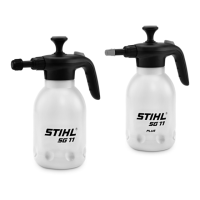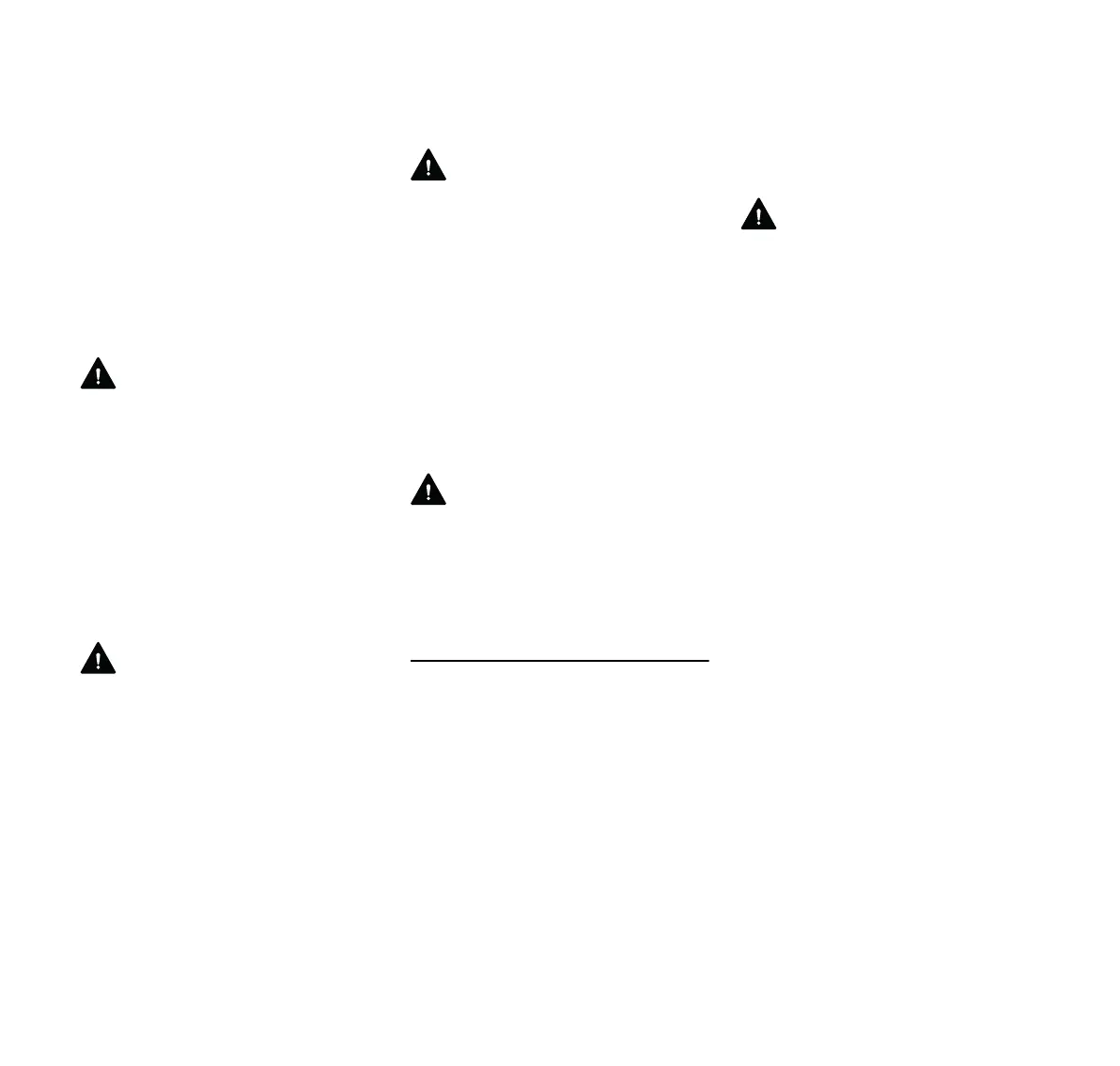SG 11 , SG 11 PLUS
English
5
very poisonous or irritating. They should
be used with extreme care. Finally,
pesticides labeled "Danger – Poison"
are for restricted use only and generally
must be used under the supervision of a
certified applicator.
Similarly, the EPA rates herbicides with
the signal words "Caution", "Warning"
and "Danger." Each category will have
unique handling characteristics.
Familiarize yourself with the
characteristics for the category you are
using.
WARNING
Mix only compatible pesticides and/or
herbicides. Wrong mixtures can produce
toxic fumes.
When handling chemicals and when
spraying, make sure you are operating
in accordance with local, state, and
federal environmental protection rules
and guidelines. Do not spray in windy
conditions. To help protect the
environment, use only the
recommended dosage – do not overuse.
WARNING
Do not eat, drink, or smoke while
handling chemicals or while you are
spraying. Never blow through nozzles,
valves, pipes or any other component by
mouth. Always handle chemicals in a
well-ventilated area while wearing
appropriate protective clothing and
safety equipment. Do not store or
transport chemicals with food or
medicines, and never reuse a chemical
container for any other purpose.
Do not transfer spray materials to other
containers, especially food and/or drink
containers.
WARNING
In case of accidental contact or ingestion
of chemicals or in case of contamination
of clothing, stop work and immediately
consult the chemical manufacturer’s
instructions. If in doubt as to what to do,
consult a poison control center or doctor
immediately. Have the product’s label
available to read to or show the persons
you consult.
Clean all chemical spills immediately.
Dispose of any residue in accordance
with state or federal laws and
regulations.
WARNING
Keep chemicals out of reach of children,
other unauthorized people or animals.
When not in use, store chemicals in a
safe place. Follow the manufacturer’s
recommendations for proper storage.
THE USE OF THE SPRAYER
Transporting the Sprayer
Empty container when transporting it in
a vehicle; properly secure it to prevent
damage to the unit.
Filling the Container
Before using the sprayer with chemicals,
fill it with fresh water to assure that you
have it properly assembled; pressurize it
and practice spraying. Also, check for
any leaks at this time. When thoroughly
familiar with the sprayer operation, drain
the water and follow normal operating
procedures.
Fill your sprayer in well-ventilated areas,
outdoors.
WARNING
Do not use:
– flammable substances/materials in
the sprayer, which can explode
causing serious or fatal injury;
– caustic or corrosive materials in the
sprayer, which could result in
damage to the unit and serious or
fatal injuries;
– liquids with a temperature above
30 °C (86 °F) to avoid scalding and
damage to the unit. Do not leave
pressurized sprayer in the hot sun
or near any heat source.
To fill the sprayer, place it on a level
surface. To reduce the risk of
contaminating the surrounding
environment, be careful not to overfill the
container with chemical solution.
If you fill the container with a hose
attached to a central water supply, be
sure the end of the hose is out of the
solution to reduce the risk of backflow,
i.e. the chemicals being sucked into the
water supply in the case of a sudden
vacuum.
Calculate the correct amount of
chemical solution so that it is used up at
one time, with no extra solution left in the
container.

